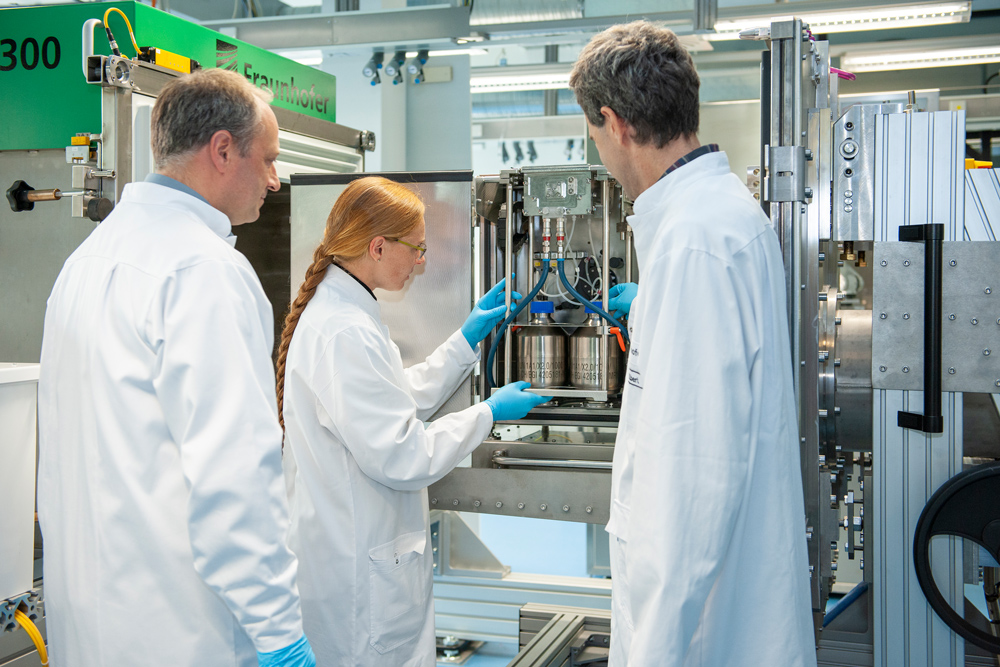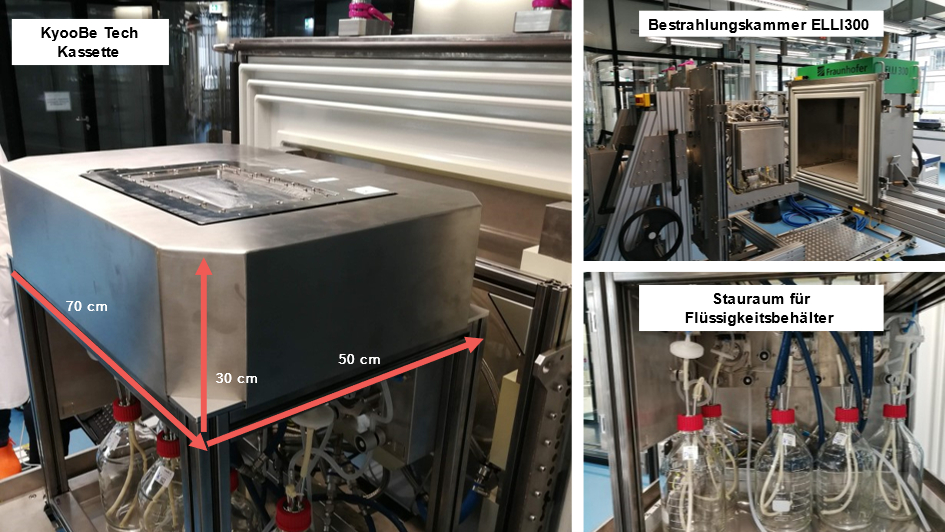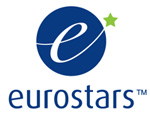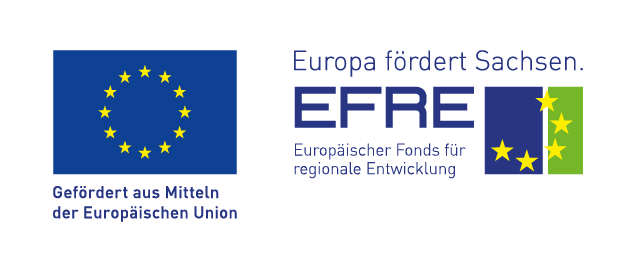Vaccine Technologies
Prevention measures to break chains of transmission

Privacy warning
With the click on the play button an external video from www.youtube.com is loaded and started. Your data is possible transferred and stored to third party. Do not start the video if you disagree. Find more about the youtube privacy statement under the following link: https://policies.google.com/privacyFraunhofer IZI employees introduce test viruses into an aircraft cabin. This is followed by extensive virological tests in the laboratory to determine the effectiveness of the measures.
The Fraunhofer Institute for Cell Therapy and Immunology is helping Airbus to develop suitable measures to rid aircraft cabins of viral pathogens (such as SARS-CoV-2).
Electronbeam-based inactivation of viruses and bacteria – the way to the market


For decades, the production of dead vaccines has been based on killing pathogens by chemicals. Although this method is used for a number of vaccines, it harbors some problems. The chemicals used, such as formaldehyde, are harmful to the environment and health and must be removed before a vaccine can be made from it. In addition, the inactivation process often takes several days to weeks. Since 2014, therefore, together with the Fraunhofer Institutes IPA and FEP, an approach has been pursued that makes the use of harmful chemicals unnecessary and inactivates the pathogens within milliseconds. For this solution, the team received the Fraunhofer Prize ”Technology for People and their Environment” in 2021. Already in 2019, the technology was out-licensed to the filling line manufacturer Bausch & Ströbel, from which the company KyooBe Tech GmbH emerged as a spin-off, which will take over the further development until marketability at the end of 2023.
In 2021, a joint consortium tested concepts and performed test runs that are optimized for manufacturing processes in the pharmaceutical industry. For example, several sensors for different process parameters, e.g. for measuring the temperature, have been integrated. The current cassette prototype is made entirely of pharma-compliant stainless steel. The heart of the cassette is a stainless steel roller over which a thin liquid film is conveyed and irradiated with low-energy electrons via an irradiation window. A scraper system then removes the irradiated liquid from the stainless steel roller and directs it into a separate product container. With the optimized cassette system, between 10 and 20 L/h throughput can currently be produced depending on the type of liquid. This represents an increase of a factor of 10 compared to previous systems. The cassette is also mounted on a carrier module with enough space for various containers and technical equipment.
From 2024, devices should then be commercially available as well as much more compact than the current structure. A device the size of a standard laboratory refrigerator is conceivable. The focus is on the production of vaccines, but an extension to other areas of application such as reducing potential contamination in biological manufacturing processes or producing cell therapeutics is possible.
Fraunhofer Prize for “Human- and Environment-Centered Technology” 2021
For the development of this more efficient, faster and environmentally friendly vaccine production process, the research team is awarded the Fraunhofer Prize "Technology for People and their Environment" 2021.
Press release on the award ceremony / May 5, 2021
This explanatory video shows how the inactivation of viruses and bacteria by low-energy electron radiation works.
Development of an antiviral drug candidate with broad-spectrum efficacy for the treatment of West Nile and Zika flavivirus infections
The FLAVICURE project aims to develop the first broad-spectrum antiviral for treatment of infections caused by the flaviviruses West Nile virus and Zika virus. These flaviviruses are transmitted to mammals and humans by mosquitoes and cause serious diseases. A spread as a result of global warming is becoming apparent, since both the distribution of heat-loving vectors such as the Asian tiger mosquito and the development of the pathogens in the vector are temperature-dependent. Furthermore, West Nile virus is also transmitted by mosquitoes native to central and northern Europe. So far, there are no treatment options and the only preventive strategy is protection against mosquito bites.
The FLAVICURE project is led by Protinhi Therapeutics from Nijmegen, Netherlands. Besides Chimera Biotec GmbH, the Fraunhofer Institute for Cell Therapy and Immunology IZI is involved as a project partner. The Vaccine Technologies and the Preclinical Validation units carry out, among other things, the preclinical efficacy studies of the anitviral lead substances. Based on efficacy and safety, the most promising candidate is then selected and prepared for clinical testing in GLP development studies.
The project is funded by the Eurostars programme, an open-topic funding programme for small and medium-sized companies that carry out joint research and development projects with partners in other member states within the framework of the European research initiative EUREKA (www.eurostars-eureka.eu).
Production of antigens for the development of a serological test for Zika viruses and dengue serotypes
Global warming and increasing globalization and are constantly adding new dimensions to the problems surrounding insect-borne viral infections. The flavivirus genus comprises a number of viruses which are predominantly transmitted by arthropods (ticks and mosquitoes) via birds and mammals. Many of these viruses are harmful to animals and humans, causing diseases such as various forms of encephalitis (including TBE), yellow fever, dengue fever and West Nile fever. The fact that, on a molecular level, the viruses and their subtypes are extremely similar in part makes a differential diagnosis difficult, despite this being an essential prerequisite for targeted therapy. As part of the project, a system is to be developed that will enable serological differentiation between infections caused by the closely related dengue and Zika viruses. The project builds upon Multiplex-based methods for diagnosing vector-borne viral infections. Solutions are to be integrated into the test that will enable the infecting serotype to be accurately identified in the case of dengue viruses. To this end, recombinant antigens will be developed at Fraunhofer IZI which will subsequently be integrated into existing diagnostic procedures, significantly improving specificity.
This project is co-financed by tax revenues on the basis of the budget approved by members of the Saxon state parliament.



